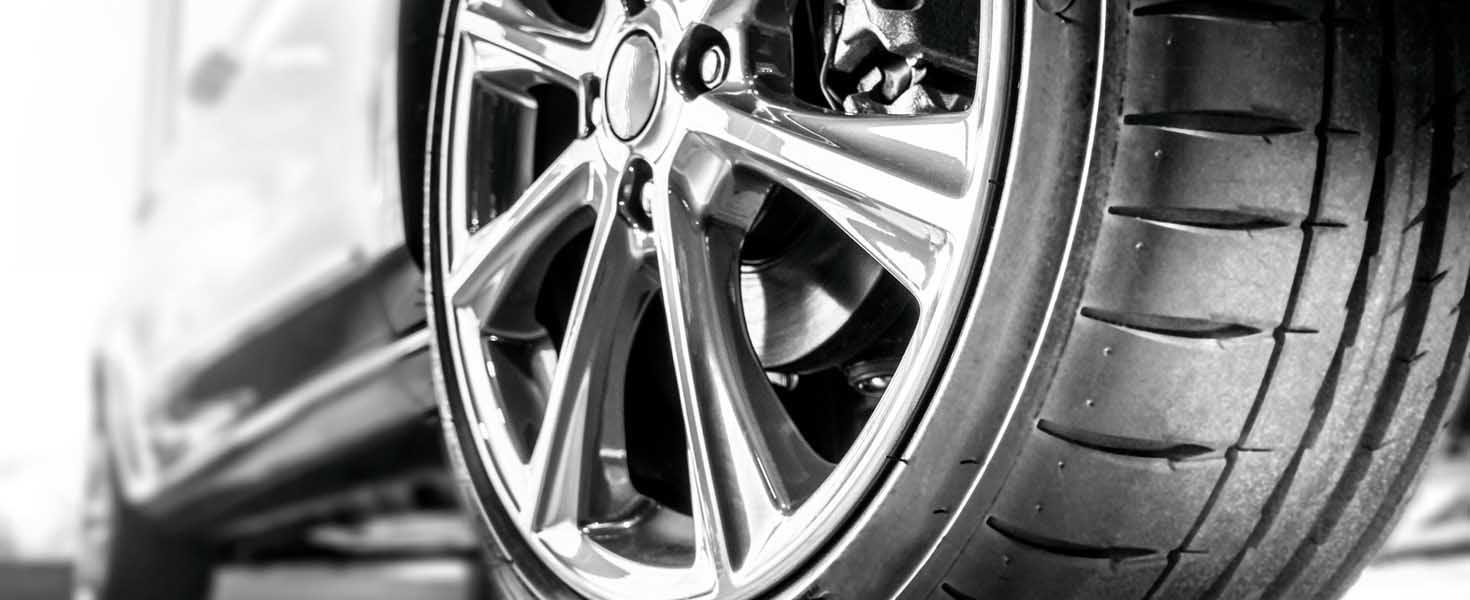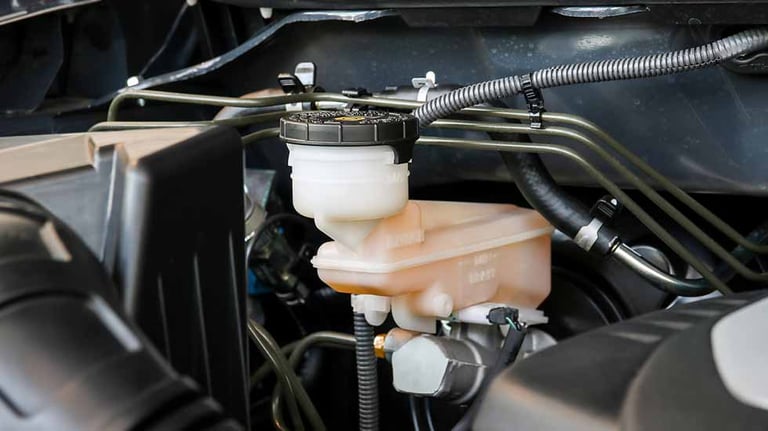Top 10 Maintenance Tasks To Keep Your Car Road-Worthy
Protect your investment in your vehicle

Your car needs an oil change or a tire rotation. It’s one more chore on your never-ending “to do” list, and sometimes it just falls through the cracks. Apparently, you’re not alone. Last year, vehicle inspection events held during AAA Car Care Month uncovered a variety of maintenance issues that were well on their way to becoming real problems for vehicle owners. Described below are 10 examples of Why following your car’s recommended maintenance schedule is not simply a hassle, but rather a way to ensure your vehicle operates more safely, uses fuel more efficiently, lasts longer, and retains its value for resale.
1. Tire pressure
Why: Over-inflated tires ride roughly and suffer premature wear at the center of their tread. Under-inflated tires decrease fuel economy, cause imprecise handling, suffer premature wear at the edges of their tread, and can overheat and fail at highway speeds. Tires typically lose about one pound of pressure per month through normal seepage, and as seasons change, tires loss or gain another pound of inflation pressure with every 10-degree change in outside temperature.
When: Check the tire pressures (including the spare) at least once a month When the tires are cold. Always follow the inflation pressure recommendations in your owner’s manual, or those on the tire information label that is located in the glove box, on a door jamb, or on the underside of the trunk lid. Do not use the inflation pressure molded into the tire sidewall; this is the pressure needed to achieve the tire’s rated load capacity, and it may or may not be the correct pressure for your particular car.
2. Engine air filter
Why: Your vehicle’s air filter prevents dust and dirt from entering the engine. A dirty or clogged air filter restricts airflow and will reduce engine performance and fuel economy while increasing exhaust emission levels.
When: Check the air filter every six months or 7,500 miles. Typically, your repair shop will inspect the filter at each oil change. You can check it by holding it up to a 60-watt light bulb. If you can see light through much of the filter, it is still clean enough to work effectively. However, if the light is blocked by most of the filter, replace it.
3. Battery cables/clamps/terminals
Why: Power from the battery flows to the rest of your vehicle’s electrical system through the cables, clamps, and terminals. If these components and connections become corroded or loose, your car won’t have the power needed to start the engine and operate other systems.
When: The battery cables, clamps, and connections should be inspected at every oil change. If there are signs of corrosion, or you notice other indications of electrical problems such as slow engine cranking or dimming headlights at idle, have your repair shop test the charging and starting system, and clean and tighten the battery connections as necessary.

4. Windshield washer fluid
Why: Rain, insects, grime, and other debris on your windshield will compromise your vision if they cannot be removed by your windshield wipers. A supply of the proper washer fluid will help your wipers remove these contaminants effectively.
When: Check your washer fluid reservoir monthly and more often When you use the washers frequently. Top it up with a washer solution formulated to aid in the removal of insects and other debris, and during winter, be sure to use a solution with antifreeze protection. Finally, test the washer spray nozzles for proper operation and aim.

5. Engine oil
Why: Oil is the lifeblood of your engine. Without an adequate supply of clean oil, your engine will wear more rapidly, and could even seize and be destroyed. Oil doesn’t freeze like water, but its viscosity (thickness) does increase as the mercury drops. Lighter grade oils reduce the load on your car’s battery and starter, allowing more rapid cranking and starting. Lighter oils also reach critical engine lubrication areas much quicker than heavier oils, greatly reducing wear.
When: Change your engine’s oil and oil filter at the specified intervals, and follow the more frequent “severe service” recommendations if your driving habits meet any of the conditions described in your owner’s manual. Always use the weight of oil recommended by your vehicle’s manufacturer for the existing temperature conditions.
6. Windshield wiper blades
Why: Windshield wipers are easy to overlook until you find yourself in a pounding rainstorm. If your wiper blades are worn, cracked, or rigid with age, the wipers will not adequately remove rain, grime, and other debris that can obscure your vision.
When: Check your car’s wiper blades at each oil change or Whenever they fail to wipe the glass clean in a single swipe. The life of a rubber insert is typically six to twelve months depending on its exposure to heat, dirt, sunlight, acid rain, and ozone. Streaking and chattering are common clues that the rubber is breaking down and replacement is needed.

7. Antifreeze/coolant protection
Why: The primary task of an engine coolant is to transfer heat from the engine to the radiator where it is removed by the passing airflow. Modern engine coolants also prevent the cooling system from freezing or boiling, protect the engine and cooling system from rust and corrosion, and lubricate the water pump seals and other cooling system components.
When: Check the coolant level at every oil change. With a cold engine, the radiator should be completely full and the coolant level in the remote reservoir should be at or above the “cold” level marking. Have the system flushed and refilled with fresh coolant at the interval specified in your vehicle owner’s manual. This can vary widely, from every two years to more than 100,000 miles, depending on the coolant type used. Simple and inexpensive testers are available to check the coolant’s level of antifreeze protection. Always top up the system with a 50/50 mixture of coolant and water to avoid altering the antifreeze level.
8. Tire tread
Why: The four points where the rubber meets the road are the only things that stand between you and an accident. In wet and snowy road conditions, having good tires with sufficient tread depth is crucial. Worn tires with inadequate tread are much more likely to hydroplane on wet pavement or lose traction in the snow, resulting in a loss of braking power and steering control.
When: Check the tread depth of your car’s tires Whenever it appears low. Insert a penny upside down into a tire groove. If you can see above Lincoln’s head at any point, replace the tire. Uneven or excessive wear of the tire tread may indicate the need for suspension repair or wheel alignment, both of which will extend the life of your tires.
9. Drive belt tensioner
Why: One or more rubber drive belts transfer the rotation of the engine’s crankshaft to various accessories that help your vehicle function properly. Belts that are too loose will allow slippage and reduce efficiency. Belts that are too tight can damage bearings and cause premature component failure.
When: Drive belt condition and tension should be checked at every oil change. Many cars today have automatic belt tensioners that require no maintenance. On others, technicians must use a belt tension gauge to check and adjust the tension manually. To prevent being stranded by a broken accessory drive belt, have your car’s belts replaced every four years or 60,000 miles.
10. Brake fluid
Why: The fluid in your car’s brake hydraulic system transfers your foot pressure at the brake pedal into stopping power at the wheels. An adequate supply of clean brake fluid is absolutely essential for safe vehicle operation. Old, moisture-contaminated brake fluid, or a low fluid level that allows air to enter the system, can lead to brake fade or a complete loss of braking power.
When: Inspect the brake fluid level at every oil change. If the level has fallen below the “low” mark on the fluid reservoir, it usually indicates major brake wear or a leak somewhere in the system; have the brakes inspected as soon as possible. Most vehicle manufacturers recommend that the brake fluid be replaced periodically to flush moisture and contaminants from the system. Every two years is a common interval; check your vehicle owner’s manual for specific recommendations.
There is no question that preventative car care is the best way to protect both your safety and your investment in your vehicle.
